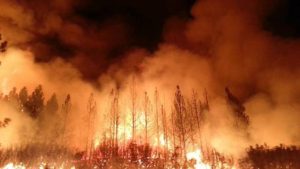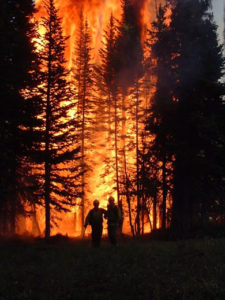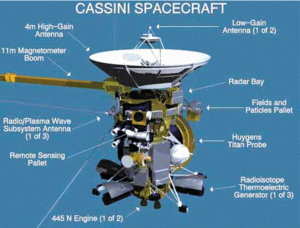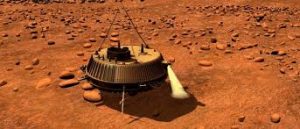By Suzanne Sparrow Watson
 The Western United States has just undergone one of the most vicious and destructive wildfire seasons on record. In Idaho, Montana, California, Oregon and Washington over 2 million acres burned this fall. That’s bigger than the entire state of Delaware. Worse, nine firefighters lost their lives and over 500 homes were burned to the ground. There are many reasons being proffered for this increase in activity – lightning, hotter than normal temperatures, and the ever-present idiots who left campfires burning or, worse yet, intentionally set the forest ablaze. I can personally attest to the smokey conditions that have caused so many problems since we had the misfortune to be vacationing in three of the wildfire areas this summer.
The Western United States has just undergone one of the most vicious and destructive wildfire seasons on record. In Idaho, Montana, California, Oregon and Washington over 2 million acres burned this fall. That’s bigger than the entire state of Delaware. Worse, nine firefighters lost their lives and over 500 homes were burned to the ground. There are many reasons being proffered for this increase in activity – lightning, hotter than normal temperatures, and the ever-present idiots who left campfires burning or, worse yet, intentionally set the forest ablaze. I can personally attest to the smokey conditions that have caused so many problems since we had the misfortune to be vacationing in three of the wildfire areas this summer.
We arrived in the Central Coast in July just as the Alamo fire in Santa Maria broke out, growing to 29,000 acres and spewing black smoke and ash our way. The following week the Whittier fire broke out near Santa Barbara, destroying an additional 18,000 acres and consuming a Scout camp. The fires and smoke, coupled with our already disastrous TurnKey Vacation Rentals condo made for a rather inauspicious beginning to our summer travels. But we weren’t done yet. In August during our two week stay in Mammoth Lakes, Yosemite endured several fires that consumed 14,000 acres of brush. Each day we would stick our heads out the front door to determine if the wind was blowing the smoke our way. We lucked out about half the time.
But wait…there’s more! In September, as we prepared for our annual trip to Sun Valley, Idaho, a spate of new fires broke out. I checked the EPA Air Quality website only to discover that the entire state of Idaho was either red or maroon – unhealthy for everyone. Our good friends who were scheduled to visit us cancelled their trip due to respiratory issues. We wavered a bit but ultimately journeyed up and luckily, the air began to clear the day we arrived and has been increasingly better. Of course, the reason it’s gotten better is that it’s SNOWING. In September. Go figure.
So it seems our summer that was planned to contain plenty of hikes and golf games has been replaced by reading novels and hearing more than we ever wanted to know about air particles. But our minor discomfort is trivial compared to the small business owners in these remote mountain towns that rely on tourists to make their bottom line. Both in Mammoth and Sun Valley we’ve talked to many of them who complain about the Forest Service policy of letting fires burn out if they aren’t endangering structures or humans. This is a rather new policy that has been increasingly implemented over the past decade. The argument goes that before the European settlement of America, forest fires consumed 20-30 million acres each year (for comparison, we’re on track for 5 million this year). The Forest Service only began actively fighting every fire in the 1930’s. But now they have adopted the new policy, citing that the burning of the forest is Mother Nature’s way of cleaning out and allowing new growth to thrive. The policy has the added benefit of not endangering firefighter’s lives. But those arguments don’t take in to account the smokey air nearby inhabitants are forced to breathe or the many forest animals who die or the diminished tourist visits that fuel the engine of small town economies.
Soon we’ll be heading back home but as a coda to our stay in Sun Valley, word around town is that Aspen Company is looking to buy Sun Valley Resort, just as they have swallowed up Mammoth Mountain, Squaw Valley and so many others. If true, it would signal the end of the last large family-run ski resort in the West. The quaint and historic Sun Valley we know and love just might be going…up in smoke.








